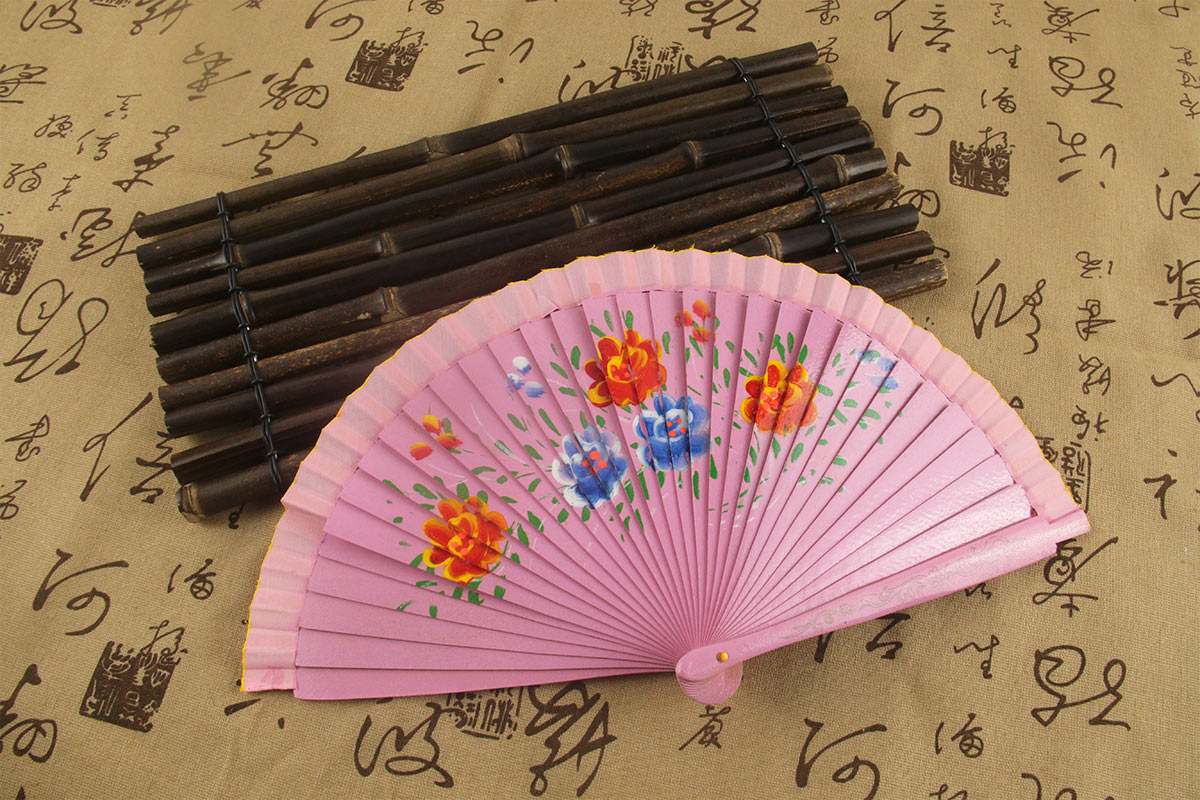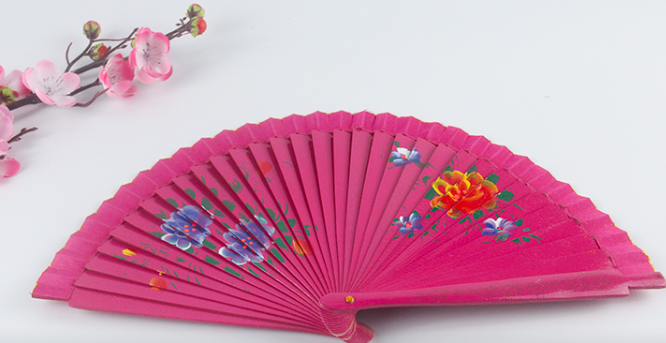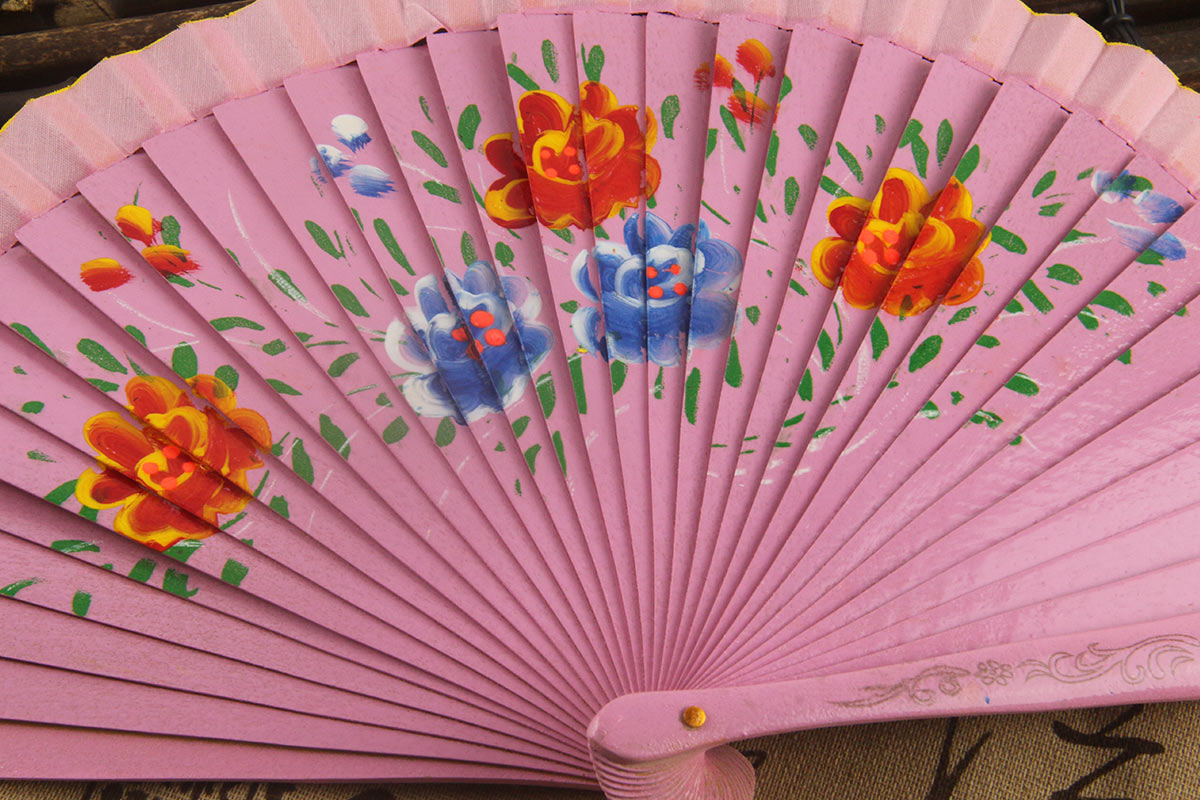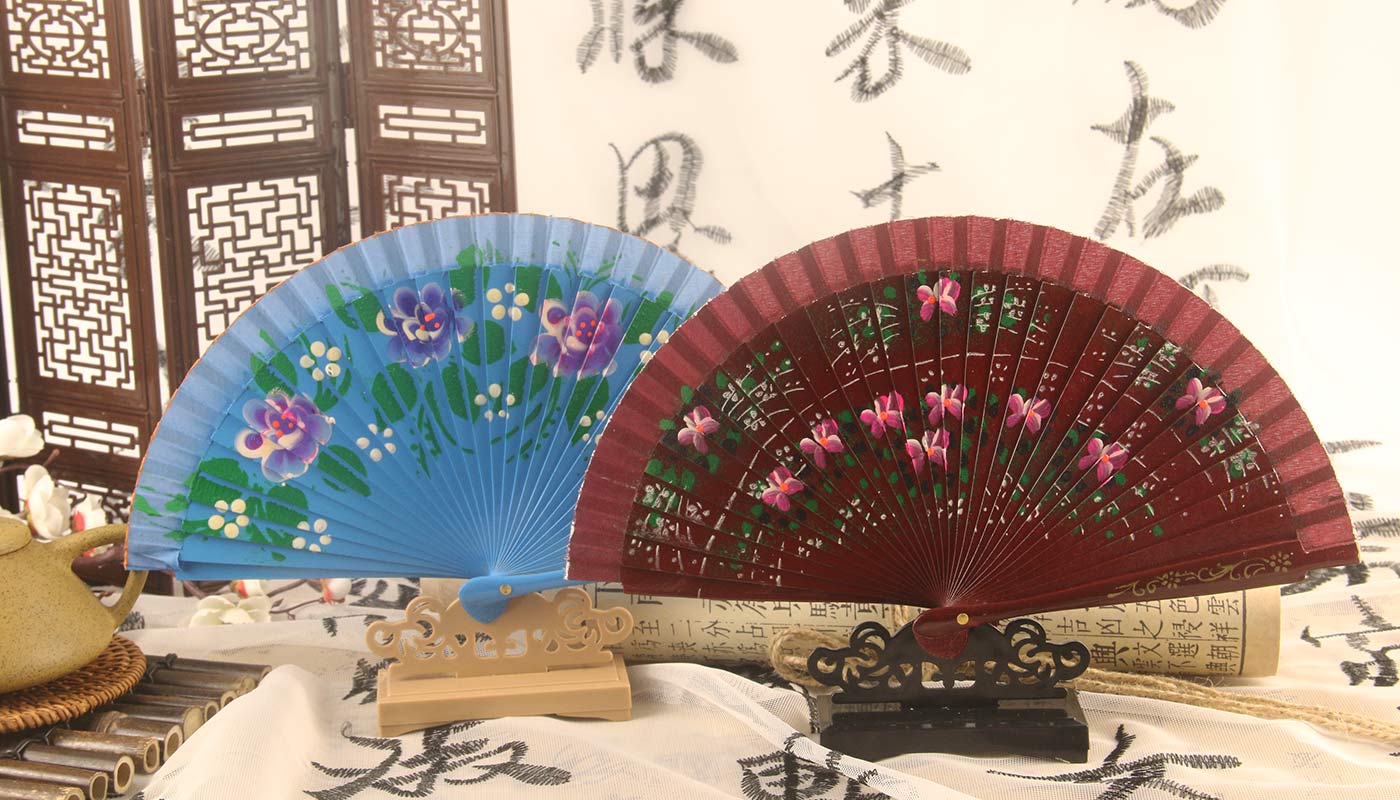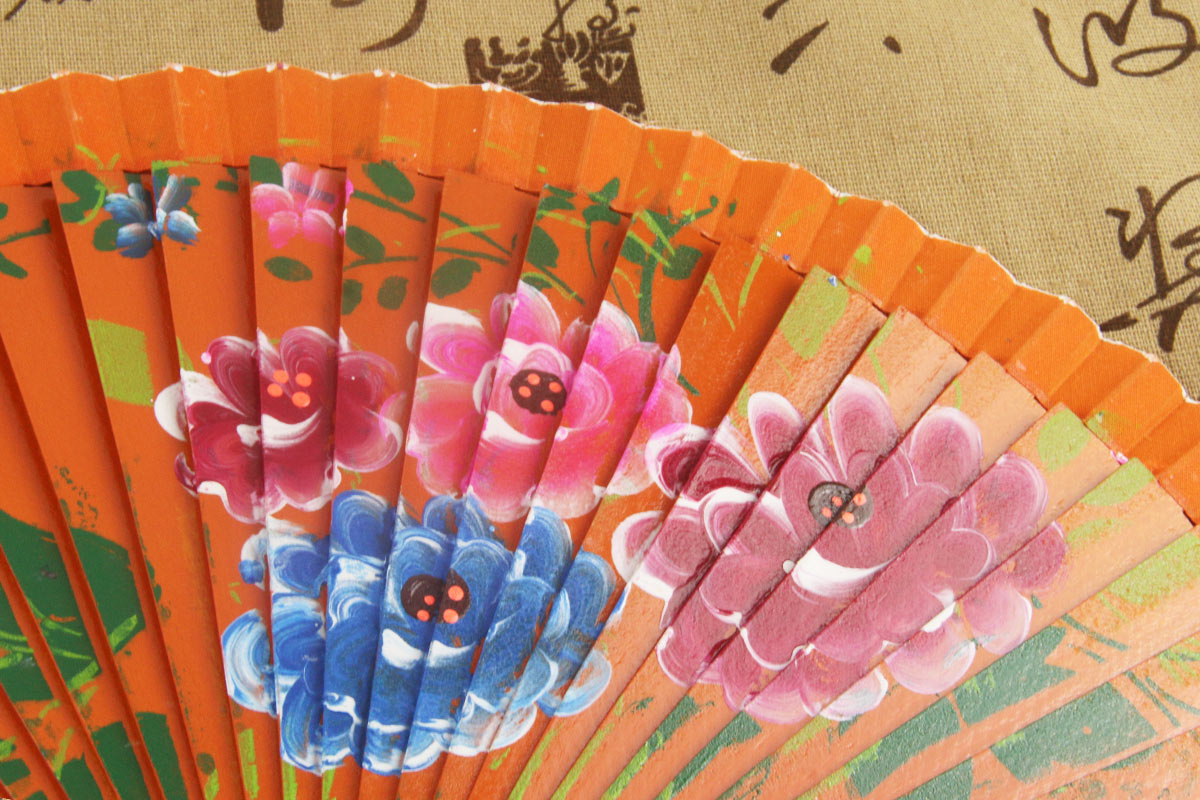The folding fan, a traditional object that combines practicality with artistic beauty, has long surpassed its role as a simple tool for cooling. The folding fan has evolved into a lasting symbol of cultural heritage and craftsmanship, with roots in East Asia that span thousands of years. It captures the perfect harmony of beauty, tradition, and timeless wisdom. From its graceful structure to its intricate details—each bamboo rib and fan surface reflects the artisan’s dedication and cultural expression.
Over time, folding fans gradually spread beyond the East, influencing art and fashion scenes worldwide and becoming a vital medium for cross-cultural exchange. Whether in the luxurious royal courts of ancient times or the glamorous fashion runways of today, folding fans uniquely connect history with the present, East with West, tradition with innovation.
Folding Fan Origin and the Wisdom of the East
Historical records show that the folding fan first originated in China more than two thousand years ago. Unlike the earlier fixed-shaped fans, folding fans embodied the ancients’ pursuit of convenience and artistry with their collapsible structure. During the Han dynasty, scholars and nobles often carried folding fans, using them for writing poetry or as a mark of status, gradually making folding fans an extension of culture and personal temperament.
In Japan, folding fans developed uniquely within the imperial court and artistic circles. Japanese craftsmen crafted fans from paper and bamboo ribs that were both beautiful and functional, often used in ceremonies, dances, and poetry gatherings, conveying emotions and elegance.
Folding Fan Origin in Royal Courts and Cultural Heritage
In ancient royal courts, folding fans were more than tools to escape the summer heat; they embodied ceremony, symbolism, and tradition. Often made with luxurious materials such as lacquer, gold leaf, and silk, folding fans became prized objects held by emperors, officials, and scholars.
Whether adorned with Chinese portraits or featured in Japanese Noh theater, folding fans always played a role in cultural expression, symbolizing status, sentiment, and the transmission of culture. Today, we can still admire historically rich folding fans like the Chinese Peony Bouquet Print Hand Fan, which features a beautiful peony bouquet pattern, blending traditional Chinese floral aesthetics with delicate craftsmanship to evoke the elegance and cultural heritage of royal courts.
Folding Fan Origin in East-West Exchange and Fashion Evolution
By the 16th century, folding fans had traveled to Europe along the Silk Road and maritime trade routes, captivating new audiences and igniting artistic admiration. European artisans borrowed from Eastern techniques, adding lace, feathers, and oil painting to transform folding fans into indispensable pieces for high society gatherings.
The Eastern charm of folding fans has never faded, especially in modern designs that blend Eastern and Western aesthetics. It combines a Spanish-style silhouette with Chinese flowering crabapple motifs for a balanced East-West aesthetic. A prime example of this fusion is the Pink Hand-Painted Five Chinese Flowering Crabapple Spanish Wood Fan, which blends Eastern floral motifs with Western fan design. Hand-painted with exquisite detail, it beautifully showcases five varieties of Chinese flowering crabapple on the fan surface.
Its elegant and soft silhouette carries exotic lines while retaining the refined mood of Eastern painting. This cross-cultural design not only reflects the global spread and evolution of folding fan art but also highlights the timeless pursuit of beauty through craftsmanship.Folding fans are more than objects—they are bridges of cultural fusion, crossing borders, time, and traditions, always standing uniquely on the world’s stage.
Modern Revival of Folding Fan Origin
Today, folding fans remain vibrant on various artistic stages and in everyday life. From craft exhibitions and wedding ceremonies to traditional dances and fashion shows, folding fans display renewed vitality in diverse forms. Whether made from traditional bamboo and paper or modern innovative materials, folding fans always embody the pursuit of aesthetics and quality of life.
They not only inherit centuries of exquisite craftsmanship but also incorporate contemporary design concepts, giving folding fans new cultural significance and fashionable charm—symbols of the perfect blend between tradition and modernity.
Conclusion
The folding fan, once a simple cooling tool, has grown into a cultural symbol and artistic emblem with a rich history rooted in Eastern civilization. Its elegance and artistry continue to inspire, bridging ancient traditions with modern sensibilities.
At Craftshistory, we carefully restore the history behind every piece, respect the materials, honor craftsmanship, and carry forward the artisan spirit. If you seek gifts or collectibles that embody rich history and artistic spirit, we invite you to discover the timeless beauty within each fan and experience the legacy of centuries past. Feel free to reach out for custom orders or inquiries—we’re here to assist you.


